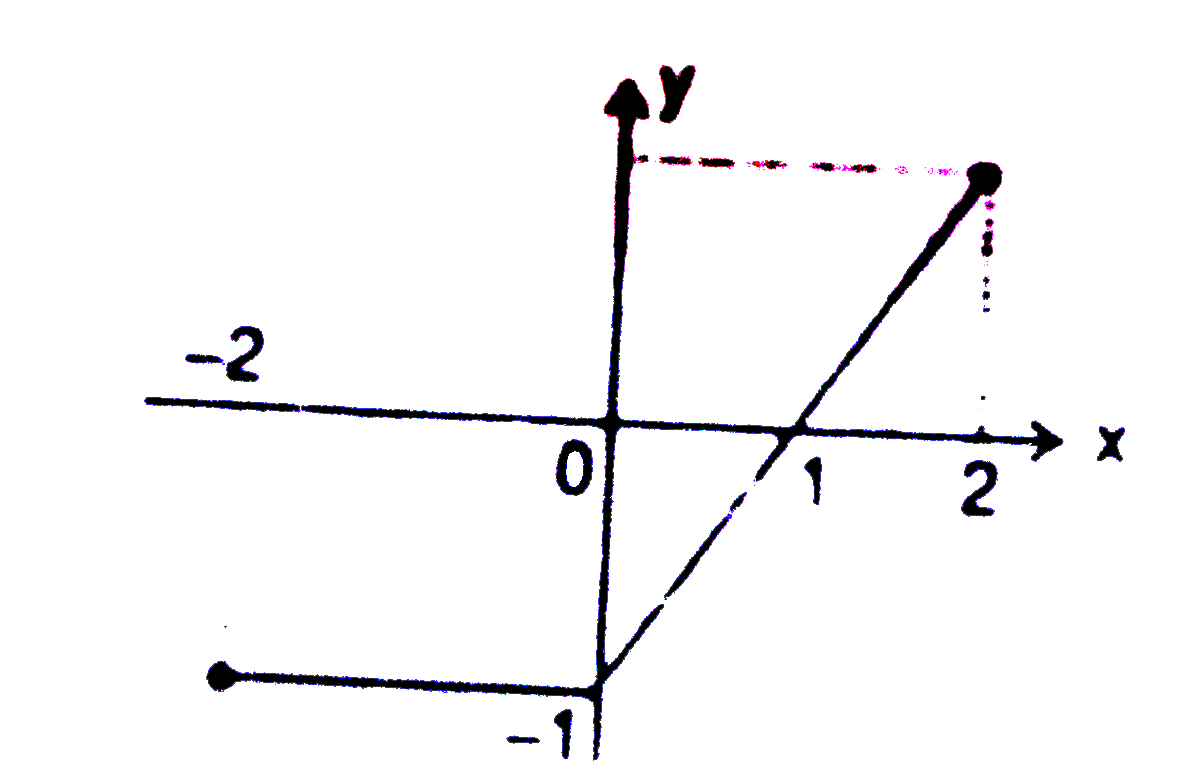Consider the graph of the function f(x)=x+√|x| Statement-1: The graph of y=f(x) has only one critical point Statement-2: f'(x) vanishes only at one point
Statement 1 is true, Statement 2 is true, Statement 2 is a correct explanation for Statement 2 is a correct explanation for Statement 1.
Statement 1 is true, Statement 2 is true, Statement 2 is not a correct explanation for Statement 1.
Statement 1 is true, Statement 2 is false.
Statement 1 is false, Statement 2 is true.
The correct Answer is:D
To solve the problem, we will analyze the function f(x)=x+√|x| and determine the critical points by finding the derivative and identifying where it vanishes.
Step 1: Define the function
The function is given by:
f(x)=x+√|x|
Step 2: Differentiate the function
We need to find the derivative f′(x). Since the function involves the absolute value, we will consider two cases: when x≥0 and when x<0.
Case 1: x≥0
f(x)=x+√x
Differentiating:
f′(x)=1+12√x
Case 2: x<0
f(x)=x+√−x
Differentiating:
f′(x)=1−12√−x
Step 3: Set the derivative to zero
We need to find where f′(x)=0 in both cases.
For x≥0:
1+12√x=0
This equation does not have any solutions since 12√x is always positive for x≥0.
For x<0:
1−12√−x=0
Solving for x:
12√−x=1⟹2√−x=1⟹√−x=12⟹−x=14⟹x=−14
Step 4: Identify critical points
The only critical point we found is x=−14.
Conclusion
- Statement 1: The graph of y=f(x) has only one critical point, which is true.
- Statement 2: f′(x) vanishes only at one point, which is also true.
Thus, both statements are correct.
The function is given by:
f(x)=x+√|x|
We need to find the derivative f′(x). Since the function involves the absolute value, we will consider two cases: when x≥0 and when x<0.
f(x)=x+√x
Differentiating:
f′(x)=1+12√x
f(x)=x+√−x
Differentiating:
f′(x)=1−12√−x
We need to find where f′(x)=0 in both cases.
1+12√x=0
This equation does not have any solutions since 12√x is always positive for x≥0.
1−12√−x=0
Solving for x:
12√−x=1⟹2√−x=1⟹√−x=12⟹−x=14⟹x=−14
The only critical point we found is x=−14.
- Statement 1: The graph of y=f(x) has only one critical point, which is true.
- Statement 2: f′(x) vanishes only at one point, which is also true.
Topper's Solved these Questions
- BOOK - CENGAGE ENGLISHCHAPTER - MONOTONOCITY AND NAXINA-MINIMA OF FUNCTIONSEXERCISE - Multiple Correct Answer Type10videos
MONOTONOCITY AND NAXINA-MINIMA OF FUNCTIONS
- BOOK - CENGAGE ENGLISHCHAPTER - MONOTONOCITY AND NAXINA-MINIMA OF FUNCTIONSEXERCISE - Comprehension Type6videos
MONOTONOCITY AND NAXINA-MINIMA OF FUNCTIONS
- BOOK - CENGAGE ENGLISHCHAPTER - MONOTONICITY AND MAXIMA MINIMA OF FUNCTIONSEXERCISE - Matrix Match Type14videos
MONOTONICITY AND MAXIMA MINIMA OF FUNCTIONS
- BOOK - CENGAGE ENGLISHCHAPTER - PAIR OF STRAIGHT LINESEXERCISE - Numberical Value Type5videos
PAIR OF STRAIGHT LINES
Similar Questions
Draw the graph of the function f(x)=x−√x.
View SolutionDraw the graph of the function f(x)=|x−1|
View SolutionDraw the graph of the function f(x)=xx
View SolutionDraw the graph of the function f(x)=−x|x|.
View SolutionDraw the graph of the function: f(x)=∣∣x2−3∣∣x|+2|
View SolutionDraw the graph of the function: f(x)=−|x−1|12
View SolutionDraw the graph of the function f(x)=(1+1x)2
View SolutionIf the graph of the function y=f(x) is as shown :

The graph of y=1/2(|f(x)|−f(x)) isView SolutionIf the graph of the function y=f(x) is as shown :

The graph of y=1/2(|f(x)|−f(x)) isView SolutionIf the graph of the function y=f(x) is as shown :

the graph of y=12(|f(x)|−f(x)) isView Solution

